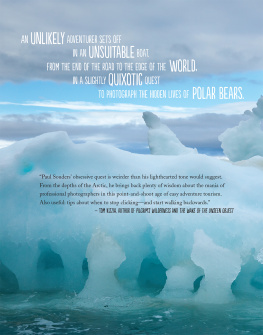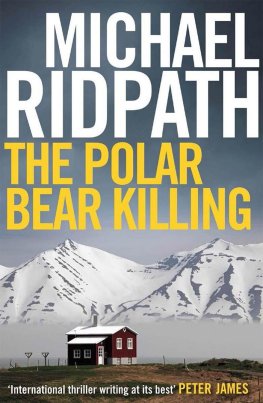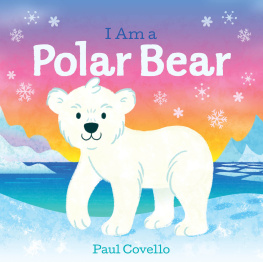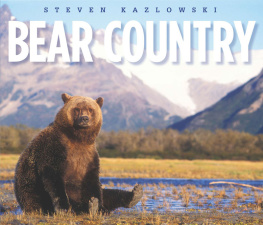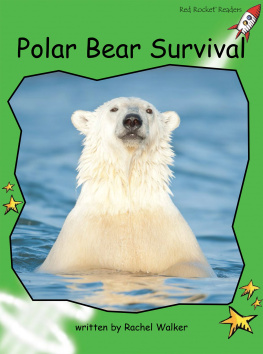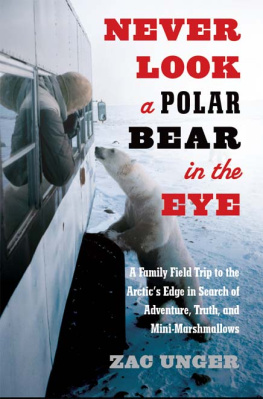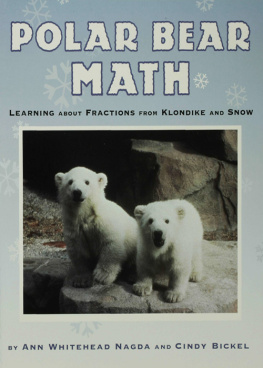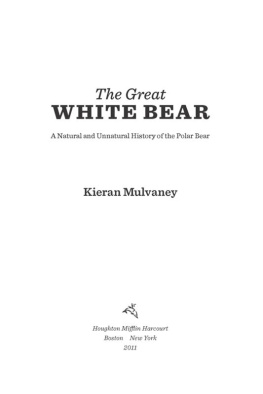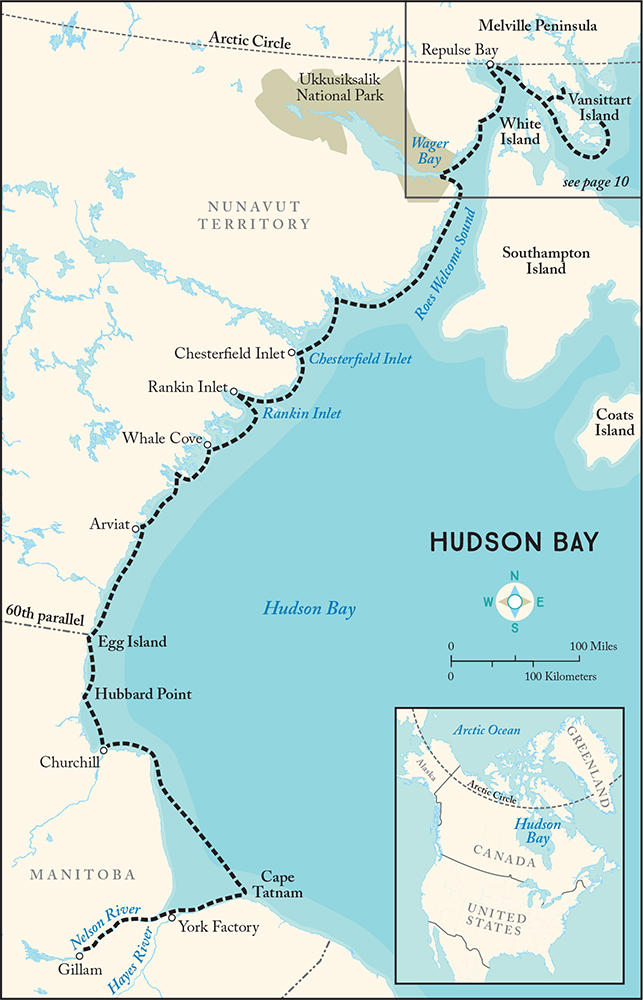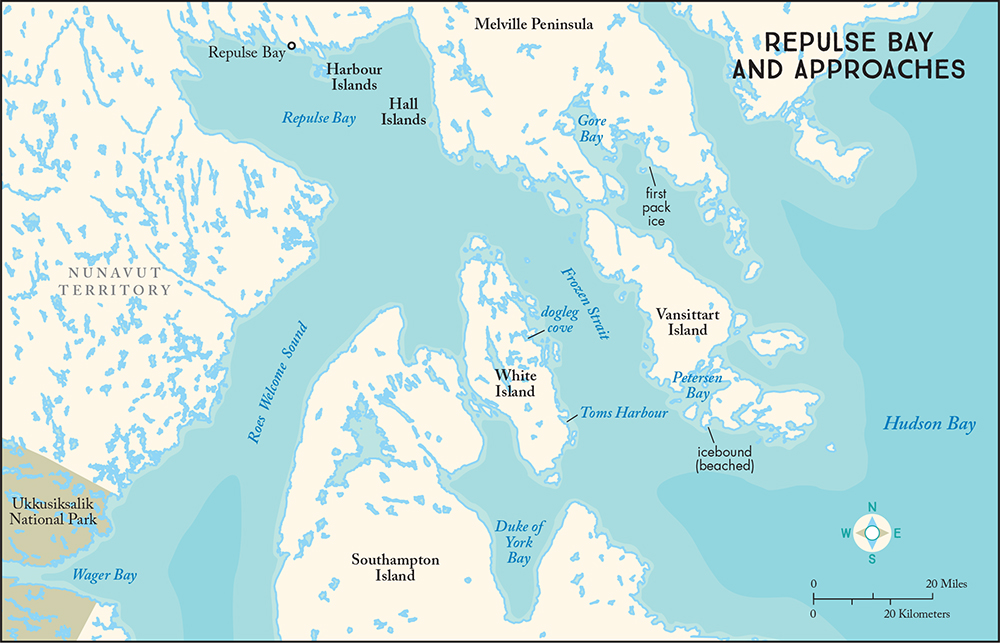ARCTIC SOLITAIRE
ARCTIC SOLITAIRE
A BOAT, A BAY,
AND THE QUEST FOR
THE PERFECT BEAR
PAUL SOUDERS
MOUNTAINEERS BOOKS is the nonprofit publishing division of The Mountaineers, an organization founded in 1906 and dedicated to the exploration, preservation, and enjoyment of outdoor and wilderness areas.
1001 SW Klickitat Way, Suite 201, Seattle, WA 98134
800.553.4453, www.mountaineersbooks.org
Copyright 2018 Paul Souders
All rights reserved. No part of this book may be reproduced or utilized in any form, or by any electronic, mechanical, or other means, without the prior written permission of the publisher.
Printed in China
Distributed in the United Kingdom by Cordee, www.cordee.co.uk
21 20 19 181 2 3 4 5
Copyeditor: Alyssa Barrett
Design and layout: Kate Basart/Union Pageworks
Cartographer: Lohnes+Wright
All photographs by the author unless credited otherwise
Cover photograph: Polar bear peering over iceberg, Repulse Bay, Nunavut
Last page: A polar bear swims near Hall Islands along Hudson Bay near the Arctic Circle.
Library of Congress Cataloging-in-Publication data is on file for this title
Mountaineers Books titles may be purchased for corporate, educational, or other promotional sales, and our authors are available for a wide range of events. For information on special discounts or booking an author, contact our customer service at 800-553-4453 or .
Printed on FSC-certified materials
ISBN (paperback): 978-1-68051-104-8
ISBN (ebook): 978-1-68051-105-5
For Janet. You are the star that guides me home.
CONTENTS
AUTHORS NOTE
This book had its origins in the journals and notes I kept during four solo boat trips to Canadas Hudson Bay, in the summers between 2012 and 2015. These northern journeys began as a sort of lark: could I step out my front door and travel overland to the shores of a cold and mysterious sea, then head off by boat to see wild animals and have some adventures? I never thought to ask whether any of this was possible, advisable, or even strictly legal. I went north to photograph polar bears, and at each days end, I scribbled down, in long hand, my experiences as a photographer and accident-prone boater. It is, at its heart, a personal recounting of my impressions and memories from travels during which I was often tired and afraid and very much alone. Time and distance have faded memory, but I have done my best to retain the accuracy of events, locations, and conversations.
In the absence of any training in the biology or behavior of wild animals, I relied instead upon my own limited observations, and I make no claim to expert knowledge now. While there were days when I must have tried their patience, I made every attempt to avoid stressing polar bears or other animals that already lived in a challenging environment.
My descriptions of the small Inuit communities along Hudson Bays western coast are those of a preoccupied traveler passing through far too quickly. In these pages, I have tried to hold onto the flavor of my brief visits and those first, sometimes gritty or unfair impressions. I arrived unannounced and uninvited in these towns and was greeted, with only rare exception, with kindness and hospitality.
A note on distances: I use American statute miles when describing distances on land. Out on the water, however, I refer to nautical miles: 1 nautical mile is equal to 1.15 statute miles or 1.85 kilometers. It sounds arbitrary, but in fact it makes for an elegant way of seeing the world. You begin by dividing the earths globe north to south into the 180 degrees of a semicircle. Each of those degrees of latitude is divided again into 60 minutes, and each of those minutes, / of a degree, equals one nautical mile, or roughly 6,000 feet.
Confused? That makes two of us. The upshot was that when I looked at the lines of latitude on my nautical charts, I could quickly see that it was 60 nautical miles, or a long days travel, to move across one degree of latitude south to north and back again.
Anyone reading these words with a working knowledge of seamanship or boat mechanics will laugh or wince, as I do now, at my foolishness and ineptitude. Think of this not as a how-to manual so much as a cautionary tale.
CHAPTER 1
THE ICE BEAR
All the easy pictures have been taken. But Im here to tell you there are still some stupid and crazy ones left out there.
I was heading north with at least one of them in mind; I was looking for the polar bear of my dreams. Not a zoo bear, not some hanging-around-the-towndump bear, and certainly not a Tundra Buggy tourist bear. I was searching for a polar bear living unafraid and standing unchallenged at the very top of the food chain. I planned to photograph that bear living, hunting, and swimming among the melting Arctic sea ice.
My plan to accomplish this was, to put it charitably, a little vague. I imagined that if I gathered up enough survival and camera gear, found a way to haul it halfway across the continent to the end of the road in Canadas north woods, and loaded it all onto a train bound for the shores of Hudson Bay... then somehow or other I would be able to go out and find that polar bear. Im not always big on details.
Working as a professional wildlife photographer, I have always liked doing things the hard way, slapping together my own solo expeditions and then figuring it all out along the way. Is it because Im difficult and stubborn and cheap? Well, yes. But Ive also found that the lessons learned through painful experience are the ones that tend to stick. Spend twenty-seven hours digging a Land Cruiser out of swamp muck with nothing but your bare hands and a small cooking pot and I wager you, too, will remember a shovel next time.
For years, I had been making noise about going to Canadas Hudson Bay to photograph the polar bears there. Churchill, Manitoba, is a tumbledown slice of small-town Canada inexplicably plopped down along the Bays shore where the vast northern forests give way to Arctic tundra. It lies smack in the middle of approximately nowhere, and no road connects it to the outside world. Theres just a long, narrow-gauge railroad leading to the smash-mouth hockey capital of Winnipeg, some six hundred miles south. If you continue a mere 220 miles farther, you can warm your frostbitten toes on the tropical shores of Fargo, North Dakota.
It takes less than two hours to reach Churchill by jet from Winnipeg. Its that or devote two long days going by slow train, if its running. Churchill has grown world famous for its polar bears. Each autumn, hundreds of them, grown lean and hungry during the long summer months, gather along the Bays western coast and wait for the freezing ice to thicken sufficiently to allow their return to the business of tracking, hunting, and eating seals. Visitors can step off the plane and, with the application of several thousand dollars, hop onto the nearest oversized, overstuffed, and overpriced Tundra Buggy, where theyll join a gaggle of other photographers and tourists, and trundle off to see dozens of polar bears in an afternoon.

